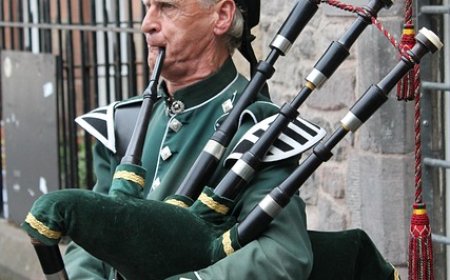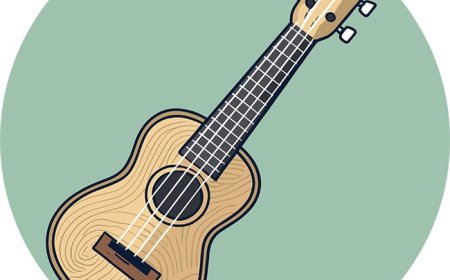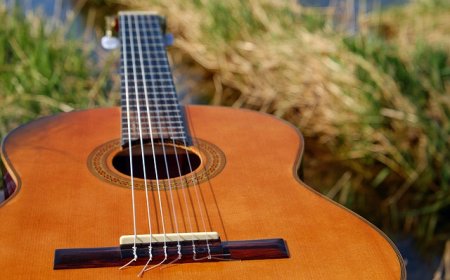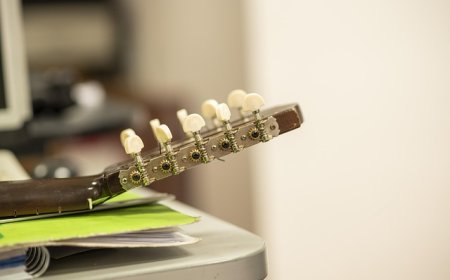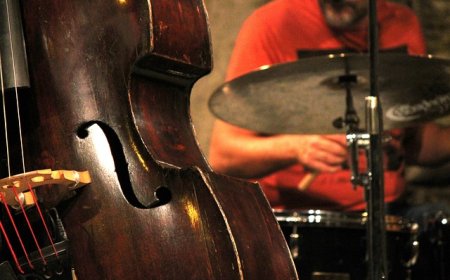Sitar Facts for Students | Explore the Sounds, History
Learn all about the sitar—a classical Indian string instrument with a unique, shimmering sound. Discover its parts, history, famous players, and how it’s played.
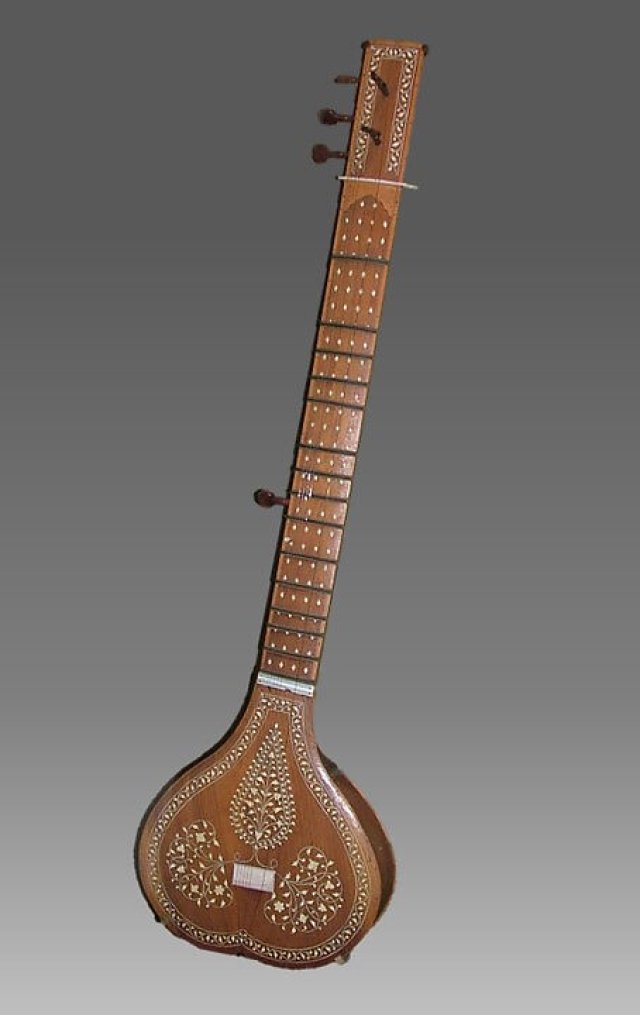
🎼 All About the Sitar
🥇 Introduction
The sitar is a famous string instrument from India, known for its rich, vibrating sound and graceful, curved shape. Its music is full of emotion, melody, and rhythm, and it's used mainly in Indian classical music. The sitar creates a special echoing tone that makes it sound almost magical. It takes patience and practice to learn, but the sitar rewards players with a deeply expressive voice.
🎶 What Is a Sitar?
A sitar is a long-necked plucked string instrument made of wood, gourd, and metal. It has 18 to 21 strings, although only 6 or 7 are played directly. The rest are called sympathetic strings, which vibrate on their own to create a shimmering background sound.
The sitar is played sitting down, with the instrument resting on the player's leg. The strings are plucked using a special wire pick called a mizrab, worn on the finger. The sitar is most commonly used in Hindustani (North Indian) classical music.
Its melodies often follow ragas, which are musical patterns used to express mood and time of day.
🧩 Parts of the Sitar
The sitar may look complicated, but each part has a special job in creating its beautiful sound:
-
Neck - Long wooden part with movable frets for melody playing
-
Gourd Resonator (Main Body) - A large, round chamber made from dried gourd that amplifies sound
-
Tumba (Secondary Gourd) - A smaller resonator attached near the top for balance and tone
-
Strings - 6 or 7 main strings, plus up to 13 sympathetic strings
-
Frets - Curved metal bars tied to the neck; they can be moved to match different ragas
-
Tuning Pegs - Large wooden pegs used to tune the main and sympathetic strings
-
Bridge - A flat, wide piece where the strings rest and vibrate
-
Mizrab - A wire plectrum worn on the finger for plucking the strings
The sympathetic strings run underneath the frets and are not played directly-they respond by vibrating when the main strings are played.
⚙️ How Does the Sitar Work?
The sitar works by plucking its strings, causing them to vibrate. These vibrations travel through the bridge and into the gourd resonator, which amplifies the sound. What makes the sitar special is the sympathetic strings-they ring out on their own, creating a sparkling, echo-like background.
Players use their left hand to press and bend the strings on the frets, and their right hand to pluck with the mizrab. The frets are curved so the player can slide between notes, giving the sitar its singing quality.
The sitar is often played in solo performances or alongside tabla (drums) and tanpura (drone instrument).
📜 History of the Sitar
The sitar was developed in northern India around the 1200s to 1300s, blending features from older Indian instruments like the vina and Persian instruments like the setar.
By the 1700s, the sitar had become a favorite of Indian classical musicians and royal courts. Its design continued to evolve, especially under masters like Amir Khusro (not to be confused with the poet) and later Vilayat Khan and Ravi Shankar.
In the 20th century, the sitar became known around the world, especially after it was introduced into Western music by Ravi Shankar, who worked with artists like The Beatles and brought Indian music to global audiences.
🥁 Famous Sitar Players
These incredible musicians have shaped how the sitar is heard and played:
-
Ravi Shankar - The most famous sitarist, who brought Indian music to the world
-
Anoushka Shankar - Daughter of Ravi Shankar, known for her innovative and classical sitar playing
-
Vilayat Khan - A master of melodic expression and lyrical sitar style
-
Nikhil Banerjee - Known for emotional depth and beautiful raga performance
-
Shujaat Khan - A modern sitar player with a soulful, vocal-like sound
-
George Harrison (The Beatles) - Studied sitar with Ravi Shankar and added it to pop music
🎶 Learning to Play the Sitar
Learning the sitar takes dedication, but it can be a rewarding and joyful journey. Beginners start by:
-
Learning how to sit with the instrument properly
-
Practicing basic plucking with the mizrab
-
Tuning both main and sympathetic strings
-
Playing basic scales and ragas
-
Learning how to bend and slide notes using the frets
Sitar students often study with a guru (teacher) and learn by listening, imitating, and repeating. As they improve, they learn complex ragas and rhythmic patterns, known as tala.
😄 Fun Facts About the Sitar
-
The word "sitar" means "three strings" in Persian, though most have many more!
-
The sitar's curved frets allow smooth slides and bends between notes.
-
The sympathetic strings vibrate on their own, creating a mystical echo.
-
Ravi Shankar taught sitar to Beatle George Harrison, inspiring songs like "Norwegian Wood."
-
A performance of Indian classical music can last over an hour, based on just one raga!
-
The sitar is often paired with tabla, a type of Indian drum.
-
Some modern sitars have electric pickups for concerts.
👧 Kid-Friendly Summary
The sitar is a beautiful string instrument from India with lots of strings and a shiny, echoing sound. It's played by plucking the strings and moving your fingers on a long neck. The sitar is great for making relaxing, flowing music and has been played for hundreds of years!
📚 Vocabulary Words
Sitar – A long-necked Indian string instrument with a bright, ringing tone
Raga – A pattern of notes used in Indian classical music
Mizrab – A wire pick worn on the finger to pluck sitar strings
Sympathetic Strings – Extra strings that ring on their own for extra sound
Bridge – Where the strings rest and send sound into the body
Tala – Rhythmic patterns used in Indian music
Frets – Metal strips or bars on the neck that mark different notes
Gourd – A hollow plant used to make the sitar’s body
❓ Interactive Quiz (8 Questions)
1. Where does the sitar come from?
A. Japan
B. India
C. China
D. Egypt
2. How many strings does a sitar usually have?
A. 4
B. 6
C. 18 to 21
D. 10
3. What is the mizrab used for?
A. Tuning the sitar
B. Plucking the strings
C. Moving the frets
D. Cleaning the instrument
4. What are sympathetic strings?
A. Broken strings
B. Strings that play sad music
C. Strings that vibrate on their own
D. Strings for tuning only
5. What is a raga?
A. A song title
B. A kind of drum
C. A melody pattern in Indian music
D. A musical mistake
6. Who helped make the sitar famous around the world?
A. Ravi Shankar
B. Ludwig Beethoven
C. Yo-Yo Ma
D. Johann Bach
7. What shape is the sitar’s main resonator made from?
A. Drum
B. Bowl
C. Gourd
D. Cone
8. What famous band used sitar in their music?
A. Queen
B. The Beatles
C. Imagine Dragons
D. Coldplay


















































